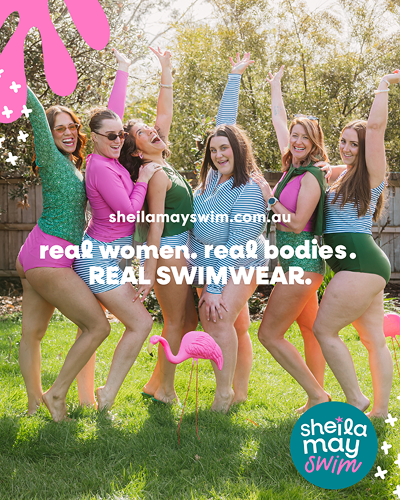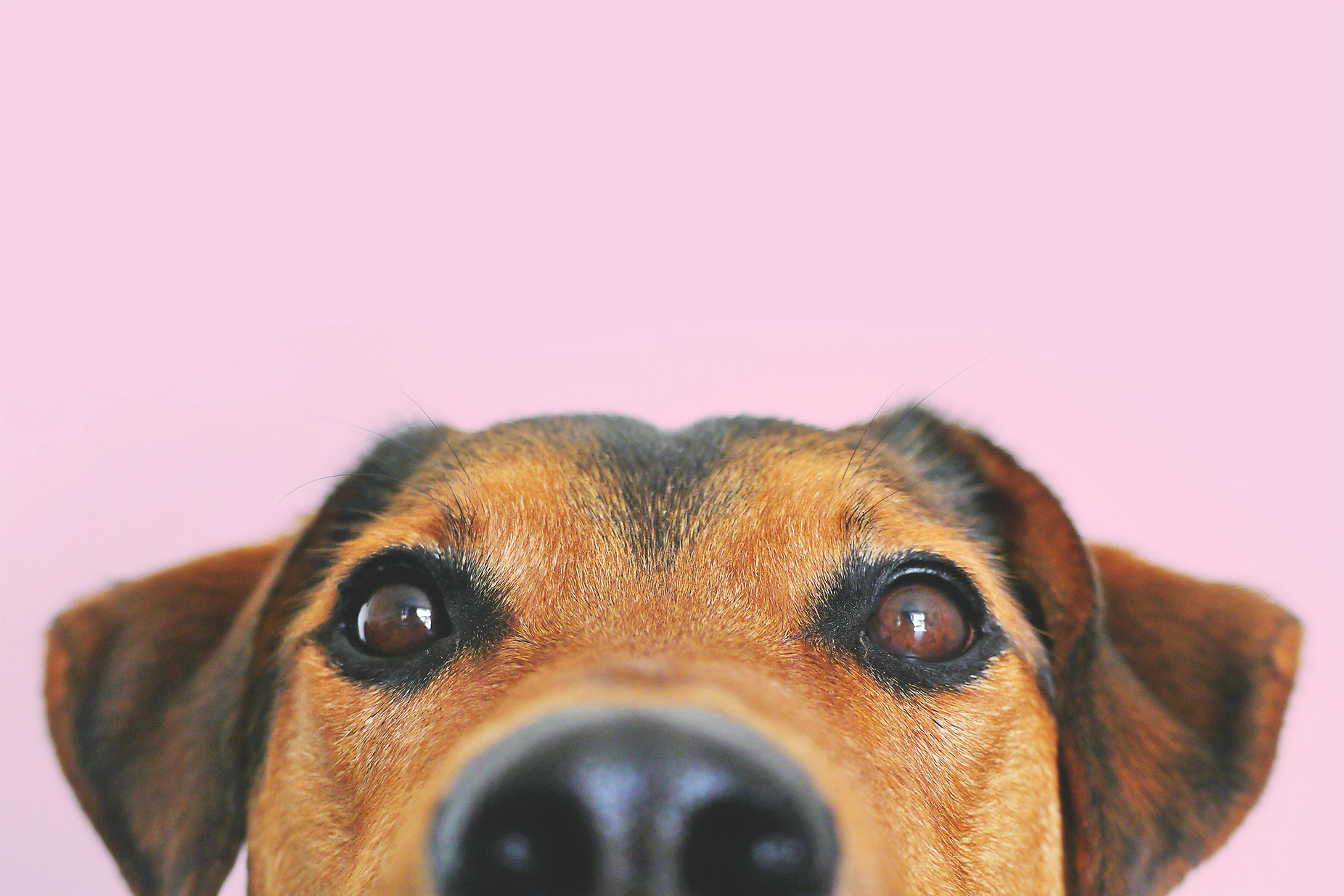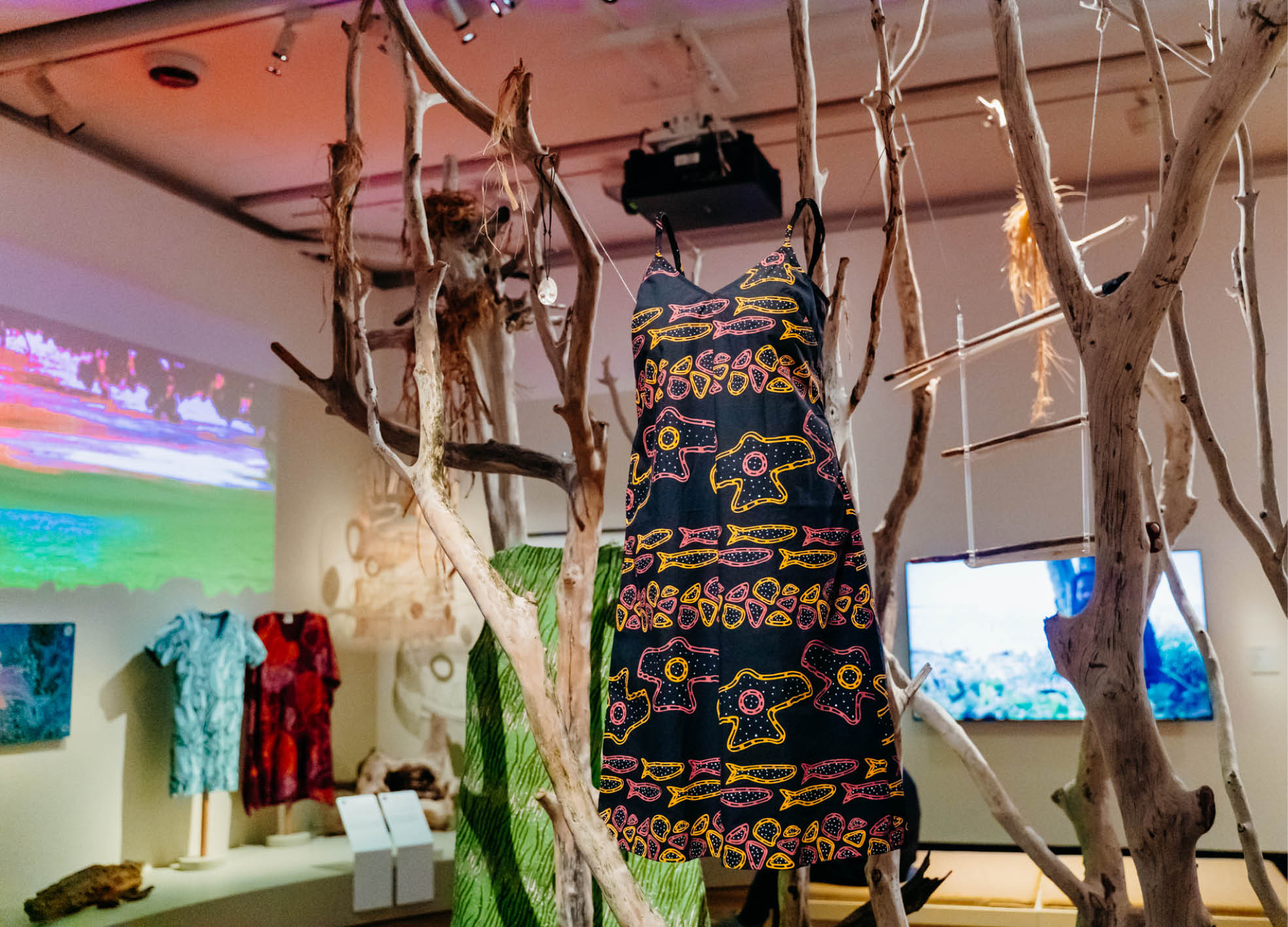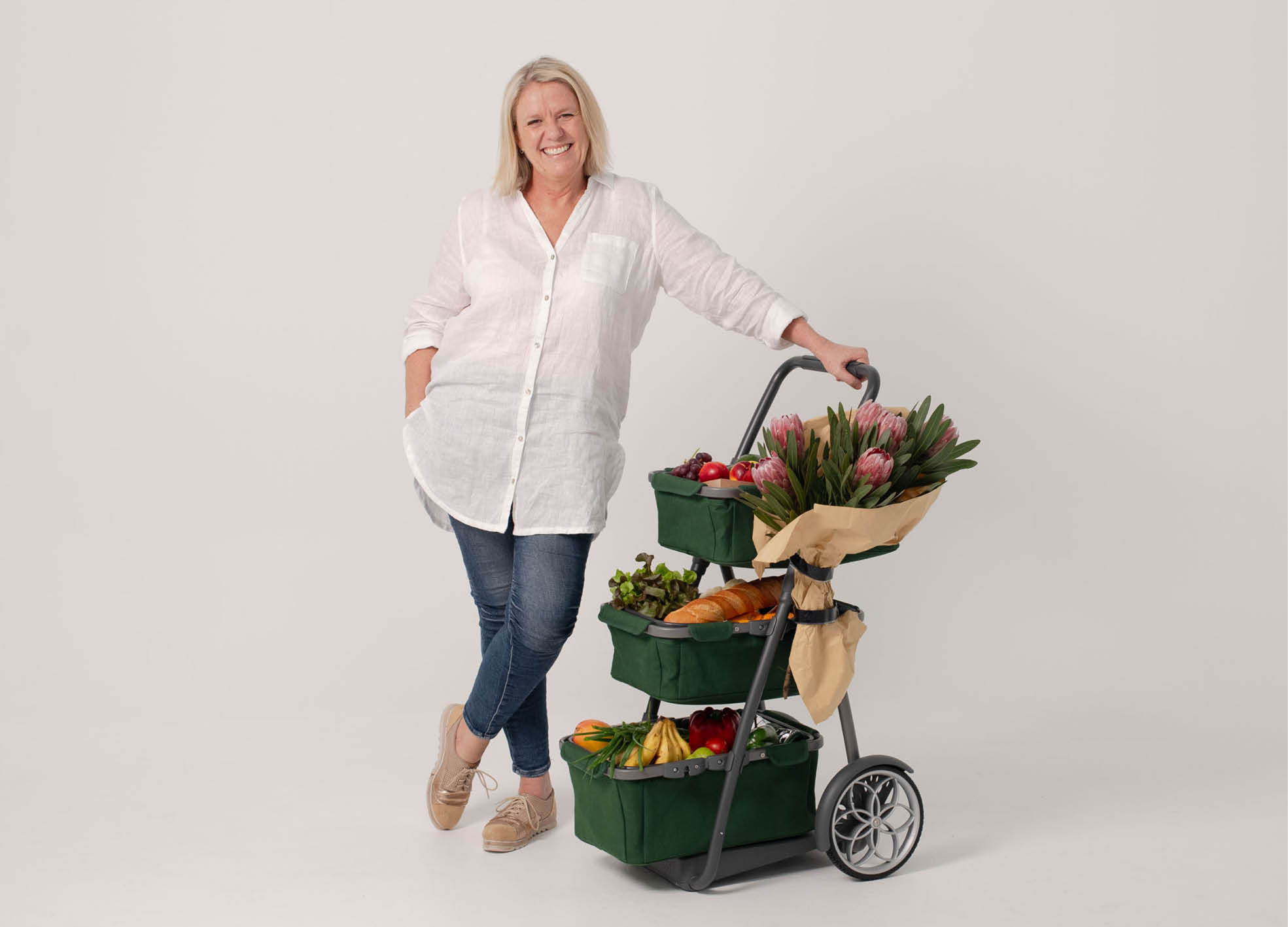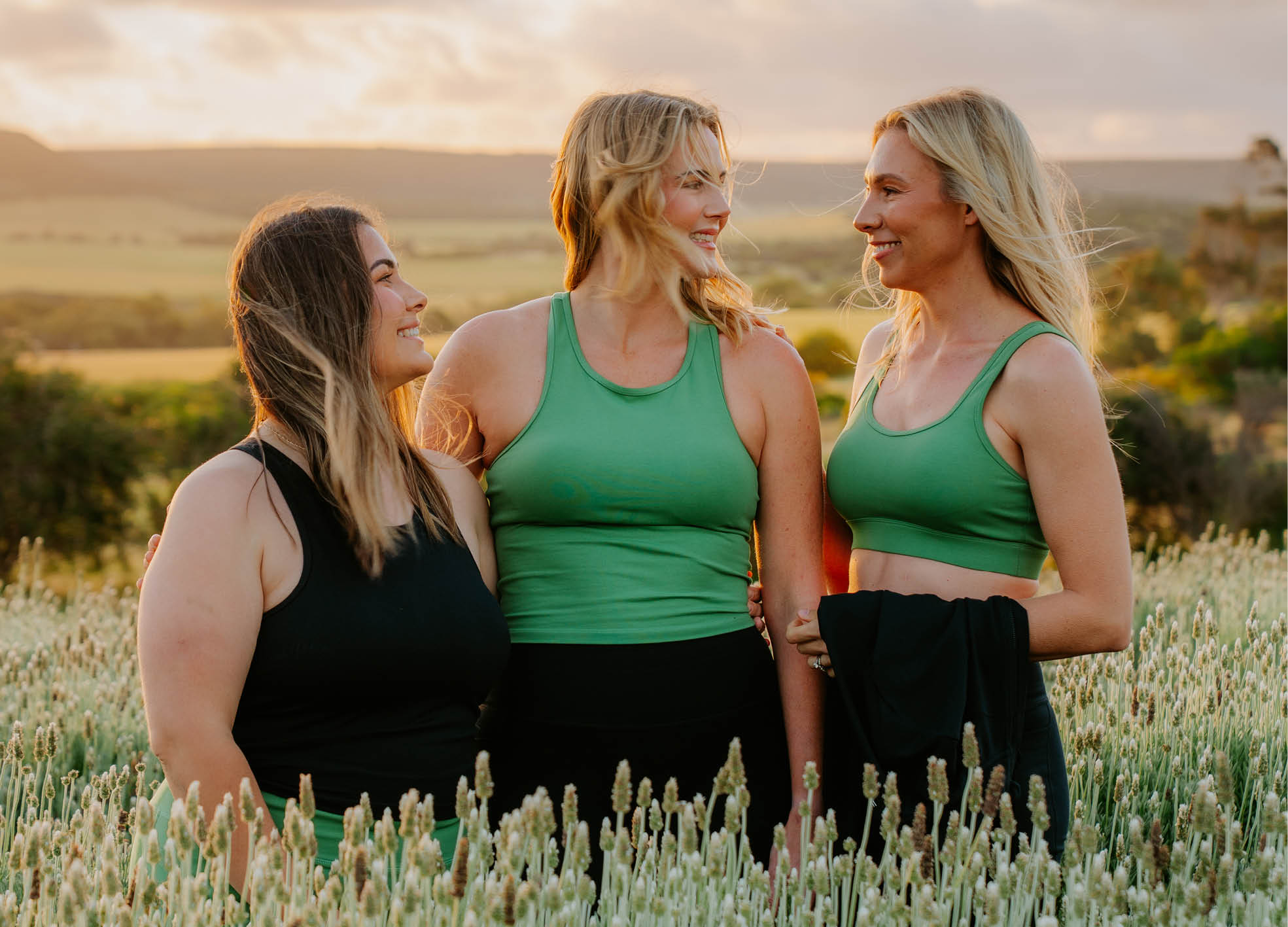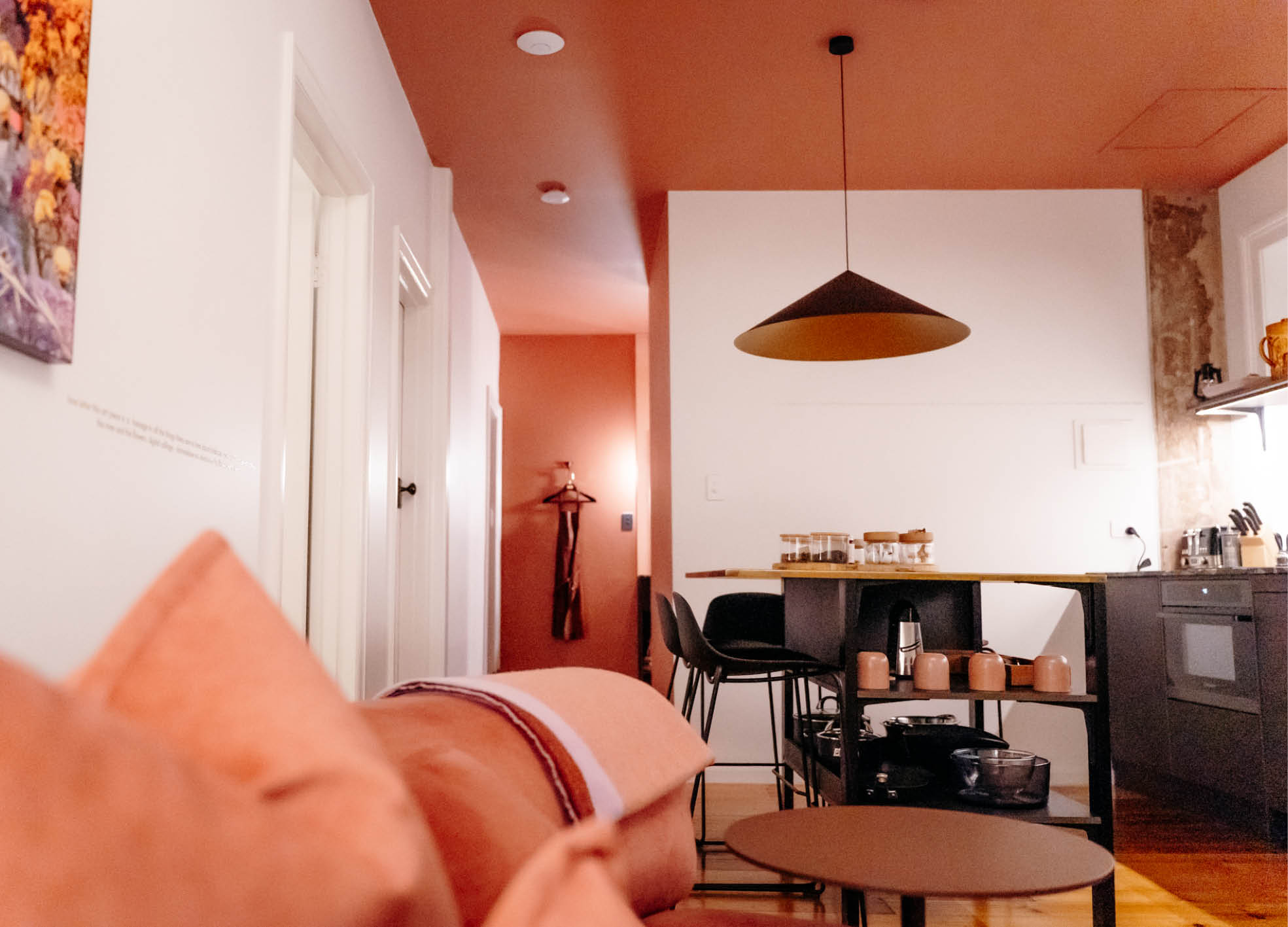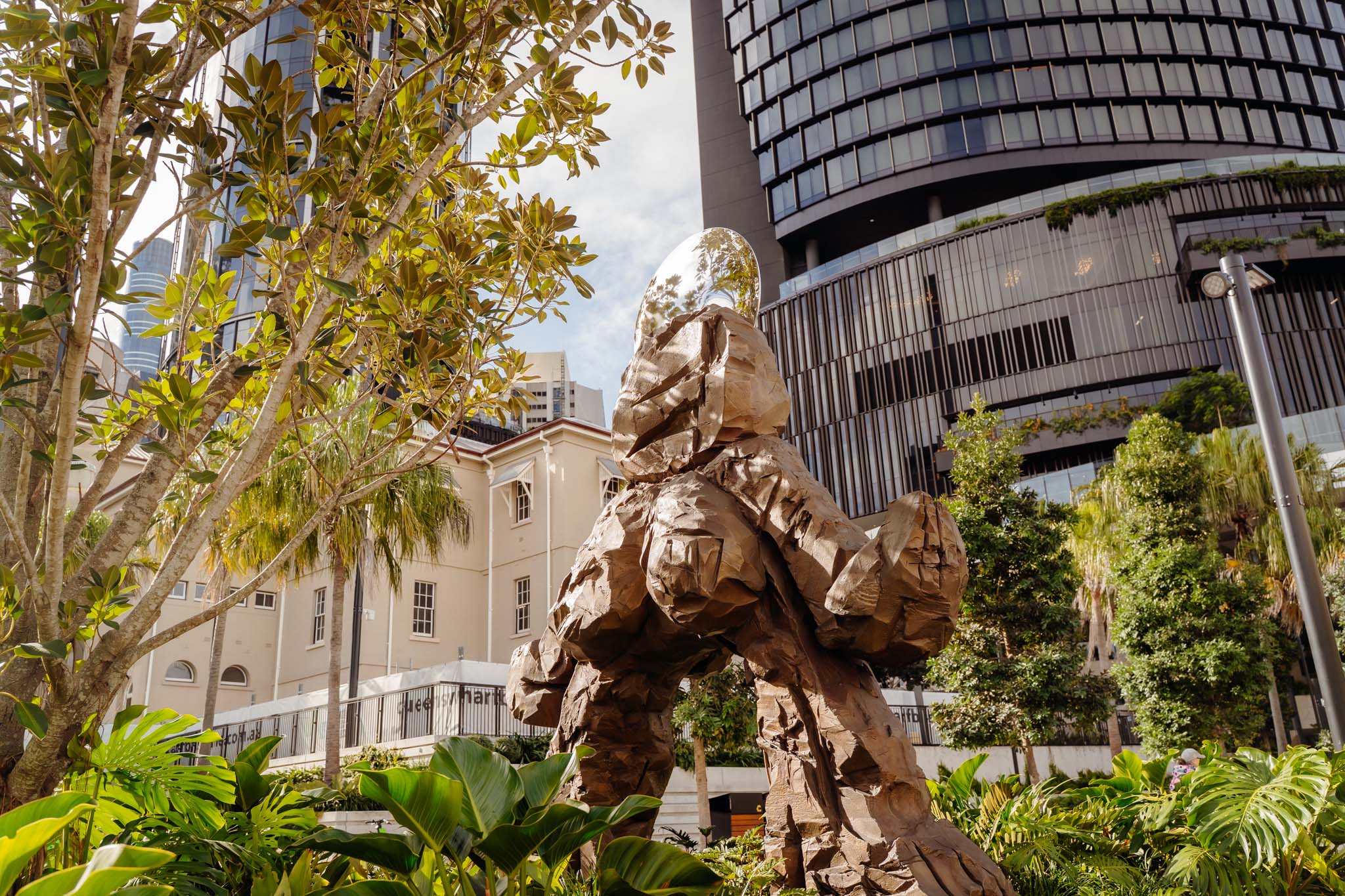Hip Hip Hooray! Our Bumper 50th Issue Is Out and It’s the Biggest One Yet
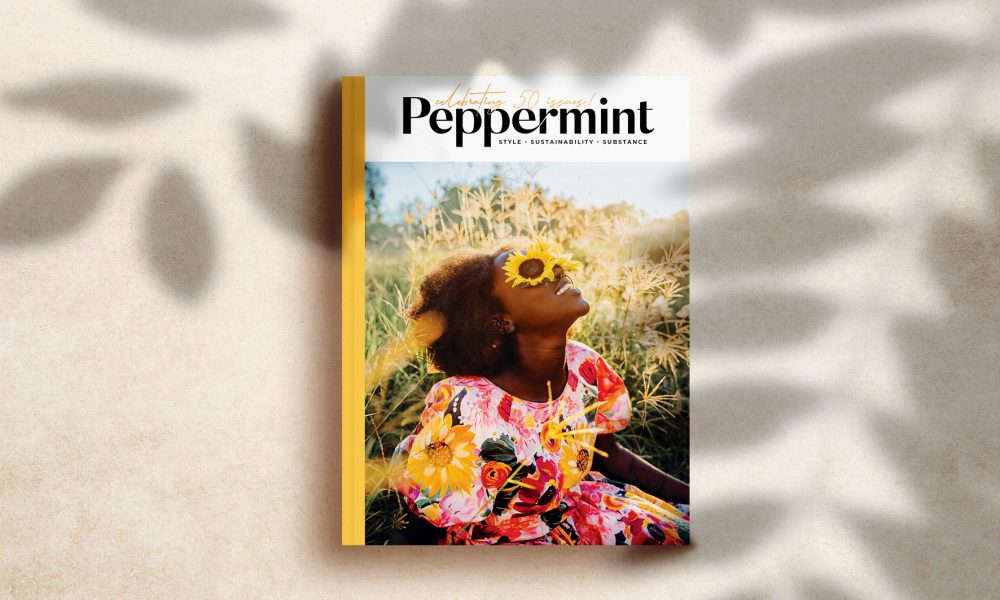
- Words by Peppermint
“You’ve always said that you hope one day there’ll be no need for Peppermint anymore – when fashion just ‘is’ ethical and sustainable by default, the climate fight has been won, and the planet and all people are thriving and living in harmony with each other. So, yeah, about that… we’ve still got a lot of work to do. The best advice I can give you is to keep putting one foot in front of the other. The world needs all of us to show up, stand up and speak up, in whatever way we can. It might seem scary, it might seem insurmountable and I know at times you want to run and hide. Have a rest (and a snack) and keep going. I can tell you with certainty that after 50 ambitious but extraordinary issues sharing thousands of thought-provoking stories, there is still so much hope to be found amongst these pages.”
Peppermint Editor-in-chief Kelley Sheenan in her Issue 50 letter
Celebrating 13 years and 50 issues of telling the stories of good people doing inspiring, important work, our bumper Winter Issue is here!
Packed with meaningful features, lots of fun sewing and craft projects, and world-changing folk, let a little bit of Peppermint sun(flower) brighten even the coldest of days. In this issue – our biggest yet – some of our favourite changemakers pen a letter to (or from) the future; we meet a sustainable stylist who can save us from our wardrobes; find out how to be a true body diversity ally thanks to fat-acceptance advocate Stephanie Yeboah; uncoil race-based hair discrimination; read how passionate permaculture champion Hannah Moloney is redefining the radical life; delve into the world of plus-size patternmaking with Muna and Broad; discover why debunking popular fake facts and figures is so important to the fashion sustainability movement; meet four brands casting off the business-as-usual approach to live and breathe purpose; read why closing the superannuation gap is so much more than an issue of feminism; Wiradjuri, Ngemba and Paakantji writer Gemma Pol talks with Amanda Hayman and Troy Casey from Aboriginal Art Co about protecting Indigenous intellectual copyright; and sink your teeth into the hefty debate over the sustainability of meat.
Plus you’ll find a plant-powered DIY from natural-dye expert Katrina Rodabaugh; a roundup of some of our fave winter-appropes products in neutral tones; artist Hillary Waters Fayle’s botanical art; comedian Lizzy Hoo shares her feelings on growing up Asian Australian; a sewing feature on the tradition and community of hand-sewing; an indoor plant troubleshooting guide for aspiring #PlantQueens everywhere; discover Caloundra’s all-weather charms; plus the power of cooking, culture and connection with Australia’s hearty-salad champ and national treasure Hetty McKinnon!
And as always, a new issue means a new free sewing pattern… and for this glorious celebratory issue, our new pattern – the Paddington puff-sleeve top – is on our cover! ?
Get your hands on our special 50th bumper issue now by visiting the links below or your closest stockist today!
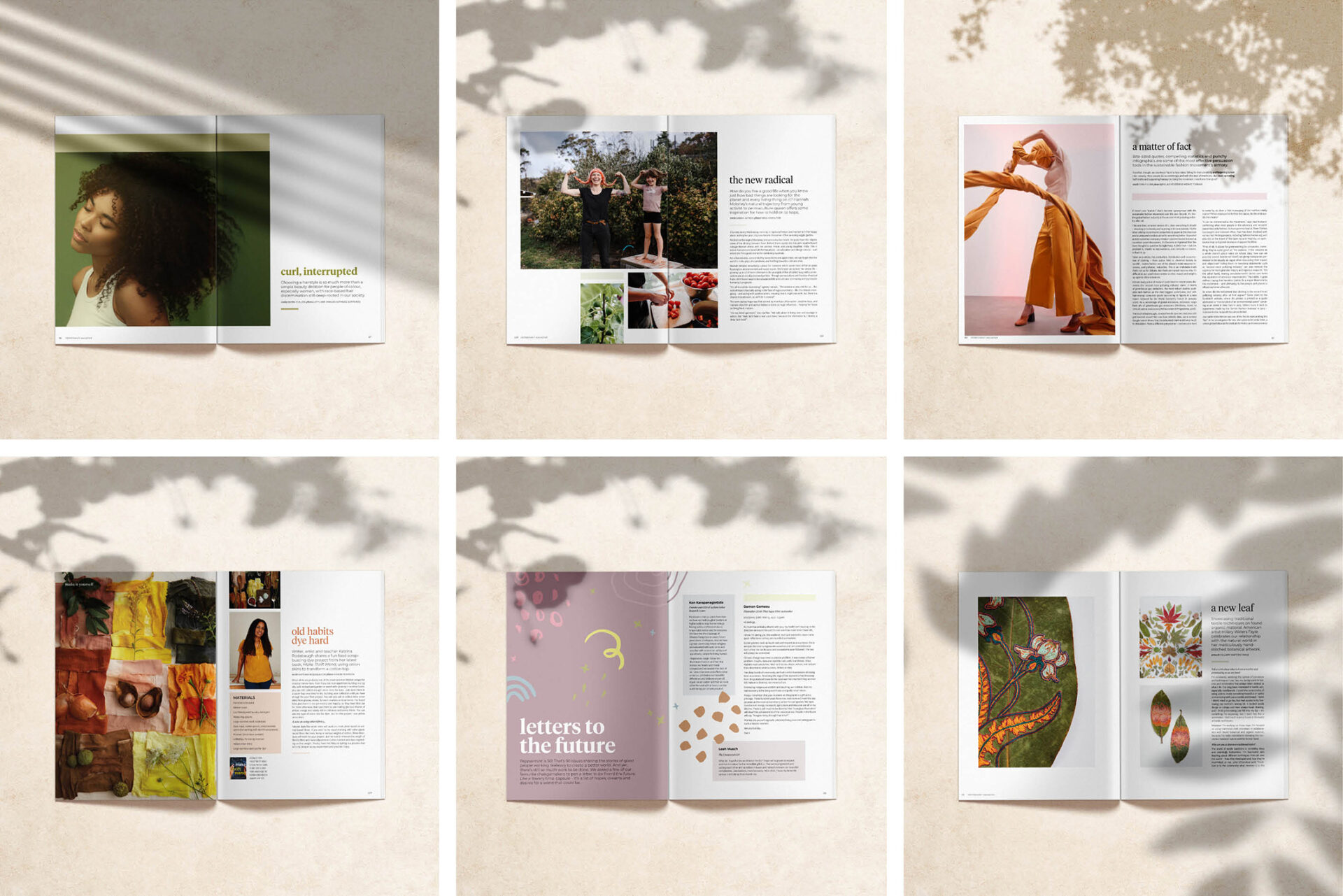
Take a peek inside this issue!
‘A NEW LEAF’ / HILLARY WATERS FAYLE Showcasing traditional textile techniques on found organic material, American artist Hillary Waters Fayle celebrates our relationship with the natural world in her meticulously hand-stitched botanical artwork.
“Looking to traditional textiles for inspiration is such rich territory – the colours, the patterns, the textures, materials and techniques are incredible. There’s such a vast wealth of inspiration in what’s already here that I’d be crazy not to! I also feel there’s a strong relationship between traditional textile production and working in harmony with the land, which feels important to me.
I try to bring together materials and processes that express the union of humanity and the physical world. Whether stitching, drawing, planting seeds or harvesting, my hands echo the gestures made by thousands of hands over thousands of years. I feel connected to the lineage of people working with textiles, plants and the land. Stitching, like agriculture, can be functional – a technical solution to join materials and a means of survival – or done purely in service of the soul, lifting the spirit through beauty and wonder.”
‘MAKING THE GRADE’ After meeting on Instagram while both trawling the hashtag #PlusSizeMinimalist, Jess Rodda and Leila Kelleher started Muna and Broad – an indie company dedicated to making modern sewing patterns for large bodies with no upper limit.
What does inclusivity mean to you?
Jess: Inclusivity is such a difficult term and often used far too freely. We don’t consider ourselves to be an inclusive brand because we know there are sizes we’re excluding. We’ve tried to be as inclusive of large bodies as we can be, offering free grading to folks who our sizes are too small for, and also being super responsive via email suggesting things like sizes and fit fixes. We’ve also tried to be inclusive by thinking about how bodies change throughout the size range. We’re not simply grading up and down from our sample size but actually making tweaks and changes every couple of sizes so we’re including and properly fitting those bodies at that size.
Leila, you’ve spoken recently about fatphobia and identifying as ‘fat’ – are you able to speak more to this?
Leila: The reclamation of the word fat, from pejorative to descriptive, is gaining momentum. I believe it’s an important part of dismantling the fatphobia we see in society. If you change your mindset from fat being something shameful or undesirable to a simple descriptor, equivalent to, say, “My hair is black,” then it begins to lose its power. We need to see diverse bodies as a natural variation, much as we see eye colour. There’s a lot of writing about this, especially the work of Roxane Gay and Aubrey Gordon.”
‘STATE OF THE ART’ Aboriginal Art Co is rewriting the script and empowering First Nations artists to reclaim space in business, as Wiradjuri, Ngemba and Paakantji writer Gemma Pol finds out.
“Art is a sacred medium for storytelling in First Nations cultures. But commercialising our art and stories, at least in a western sense, is a relatively new experience for First Nations peoples. Many First Nations artists live in remote areas of so-called Australia, where access to resources like internet and business support is limited. Often motivated by the desire to help, many non-Indigenous people have established businesses to provide platforms for First Nations creatives to sell their art. But even with the most genuine of intentions, problems arise.
This is largely because of the white saviour complex – subtle, usually going unnoticed by the white gaze, but toxic to those presumed to need saving. When relationships between First Nations creatives and non-Indigenous people are grounded in perceived charity, the artists are subject to the deeply embedded power imbalances that emerge from ongoing colonial thinking. This manifests in artists not being paid fairly or their art and stories being misrepresented, misused or appropriated. Many artists can speak to these struggles, but for First Nations artists, the risks are heightened because our art uses complex symbolism that transcends aesthetics.
Our symbols are visual forms of knowledge that express ancient stories and cultural intellect. No one knows our stories like we do. We don’t need white saviours. We need self-determination.
‘A MATTER OF FACT’ Could spreading half-truths and supporting hearsay be doing the fashion sustainability more harm than good? Words by Emily Lush.
“If there’s one ‘statistic’ that’s become synonymous with the sustainable fashion movement over the past decade, it’s this: the global fashion industry is the second most polluting industry after oil.
This one-liner, or some version of it, does everything it should – shocking in its brevity and haunting in its conciseness, it’s the ideal rallying cry to inspire consumers to pause at the checkout and to pressure brands to strive for something better. Repeated across numerous company mission statements and intoned at countless panel discussions, it’s become so ingrained that few have thought to question its legitimacy. It feels true – but the problem is, there’s no real evidence, and certainly no source, to back it up.“
Nature doesn’t care about marketing. A science and research-based approach is the only way we can ensure we are making measurable change. – Maxine Bédat, New Standard Institute
‘CURL, INTERRUPTED’ Choosing a hairstyle is so much more than a simple beauty decision for people of colour, especially women, with race-based hair discrimination still deep-rooted in our society. Words by Desta Cullen.
“Our kinky, curly, wavy hair has been pulled and pushed down, straightened and ‘tamed’ to do simple things like be allowed to go to certain schools, to get that office job, to feel, dare I even say it, ‘beautiful’,” says Lisa Fa’alafi, a Samoan-Australian director and choreographer known for pushing the boundaries of gender and culture.
“Most BIPOC women with Afro or curly hair will understand this battle of loving our natural hair, because we’ve had to unlearn this embedded idea, we’ve had to do the work to decolonise our own perceptions.”
JOIN OUR MAILING LIST
Brighten up your inbox with our not-too-frequent emails featuring Peppermint-related news, events, competitions and more!
explore
More articles
When you hang a painting on a wall, the story stays put. But when you wear a beautifully made garment that may as well be a piece of art? The story travels. It moves through the world with you –…
We all do it: fire up the car for a 5-minute drive to pick up groceries, drop off sewing supplies, or run a quick errand…
Here’s a question: who decided that natural fibres aren’t a great fit in activewear? For Geraldton mum-of-four Jade Payne, that question became paramount after a…
Fancy a getaway in a heritage building that was once a hospital, an orphanage AND a school in a previous life? Despite what your initial…
When the algorithm gods reward dance trends over hand-thrown ceramics, and building a website feels more stressful than a tax return, where’s a maker to…
Time-travelling lungfish floating in a mosaic of glass tiles, a four-breasted female empowerment goddess cast in bronze, and a striking botanical sculpture spanning 15 metres,…
Hang out with us on Instagram
“Crafting is something that has come naturally since I was small and I just haven’t stopped. When I was smaller, I was interested in the end result. As I’ve gotten older, I realise it’s the process that keeps me coming back to craft. It’s a meditative state for me and I find the repetitive action of the stitching and felting quite therapeutic.”
Craving a world filled with warmth and whimsy? It’s all in a day’s work for textile artist @Cat_Rabbit, whose latest book, ‘Trinkets’, is bursting with felty food friends to make and cherish. Cat invited us into her universe, filled with cheeky characters, layered storytelling and loads of humour.
Plus: try the super sweet pattern for Cat’s Lucky Pickle, perfect to make as a stocking stuffer, extracted from Trinkets.
Read more from our ‘Just felt right’ feature in Issue 64, at newsagents and stockists now!
Photos: Tatanja Ross @On_JacksonStreet and Cat Rabbit
#PeppermintMagazine #CatRabbit #LuckyPickle #Craft #Crafting #Felting #FeltCrafts #Trinkets #ChristmasDecorations

Our hearts go out to everyone impacted by the Bondi Beach violence, especially the Jewish community. Also to the beachgoers, those who bravely helped and the first responders.
While it`s easy – and understandable – to get caught up in the horror of it all and direct anger at certain groups, remember this quote from teacher and author Erin Gruwell: "Don`t let the actions of a few determine the way you feel about an entire group."
“You don`t fight racism with racism. You fight racism with solidarity," said Bobby Seale of the Black Panthers. And solidarity is exactly what we need right now.
If you are feeling overwhelmed, you are not alone. Remember there is much more kindness in the world than hate. ❤️🩹
@LifelineAustralia has created a Bondi Beach Incident: Wellbeing support guide, where you’ll find information about common reactions, reassurance that what you’re feeling is valid, and ideas for taking care of your wellbeing.
https://lifeline.org.au/bondi-incident
You can also call Lifeline on 13 11 14, text on 0477 13 11 14 or chat at lifeline.org.au/crisis-chat anytime, no matter how this has impacted you.
@BeyondBlueOfficial is also available with free 24/7 support by phone on 1300 22 4636 or webchat at https://www.beyondblue.org.au/
Register.Find.Reunite. has been activated by @RedCrossAu to help people reconnect with family and friends. Visit redcross.org.au to access the service.
@NSWPolice Public Information and Inquiry Centre (PIIC) is operating 24/7 on 1800 227 228 for information relating to people impacted.
@LifeBloodAu is supporting Sydney hospitals. O- and O+ blood are always in high demand in emergencies. To donate (from anywhere in Australia – all states are welcome and helpful!) call 13 14 95 or use the Lifeblood app.

Just a reminder… from @SugarHouseCeramicCo
This holiday season be kind, patient and shop local!
#ShopSmall #ShopLocal #SupportSmallBusiness

✨️ Our website is getting a glow-up! ✨️
Sorry for the inconvenience but it will be offline for a few days. You can still purchase subscriptions (perfect for chrissy presents!) via the links on the holding page.
Last year we were extremely excited to receive funding from the Meta Australian News Fund, in partnership with the Walkley Foundation. The result of this is a fabulous new website, with a sustainable fashion and sewing directory that will follow early next year. We`ve worked with the lovely Amy and Jenny at @CrumpetClubHouse who have been making the magic happen – we can`t wait to show you the outcome! ✨️
In the meantime, please get in touch if you need help with anything – hello@peppermintmag.com
We`ll see you on the other side! 🌈

🎀 12 DAYS OF XMAS GIVEAWAYS 🎀
🎄On the 12th day of Christmas, we’re giving away… a GREENPAN FROST ICE CREAM & FROZEN DRINK MAKER! 🎄
Ice, ice, baby! Calling all kitchen magicians and dessert devotees: it’s time to churn, blend and devour your way to frozen heaven. It’s our final giveaway – and hoo girl, it’s a goodie! Thanks to the clever folks at @TheOriginalGreenPan.Anz, one reader will cool their mitts on the Frost Ice Cream & Frozen Drink Maker – perfect for conjuring up home-made gelato, sorbet, smoothies, slushies and more!
Valued at $599, the Frost Ice Cream & Frozen Drink Maker is designed with GreenPan’s signature Thermolon™ ceramic non-stick coating, so you can whip up summer-ready sweet treats free of PFAS, PFOA, lead and cadmium.
To snag this frosty prize, follow @TheOriginalGreenPan.Anz and tag a friend in the comments below before midday AEST 15 December! (Australian and New Zealand addresses only, please.) Good luck!
Update: The lucky winner of our final giveaway is @just__for__van - congrats! We`ll dm to get your details. Well done! 🎉
#PeppermintMagazine #12DaysOfChristmas #12DaysOfGiveaways #GreenPan

Oh hey 👋🏼 Just a little reminder that our subscriptions are sent in paper envelopes, which is a bit of a rarity in our industry. 💅🏼
If you need more reasons to subscribe, how about these:
💌 Enjoy a new issue arriving in your letterbox every six months.
💌 Subscribers exclusively receive FOUR digital sewing patterns per year!
💌 You’ll be the first to get your hands (and needles) on our patterns with early access.
💌 Get a 20% discount code on back issues of Peppermint so you can start your collection today!
💌 Automatically go in the draw to win amazing prizes each issue.
💌 Feel good about your subscription arriving in plastic-free postage.
💌 Support a small, women-led Australian business.
💌 Help us make the world a better place!
And... it`s a perfect Christmas present! We have a downloadable card you can print to go with your gift.
💌 Link in bio!
#PeppermintMagazine #SupportSmallBusiness #ShopLocal #ShopSustainable #PlasticFree


